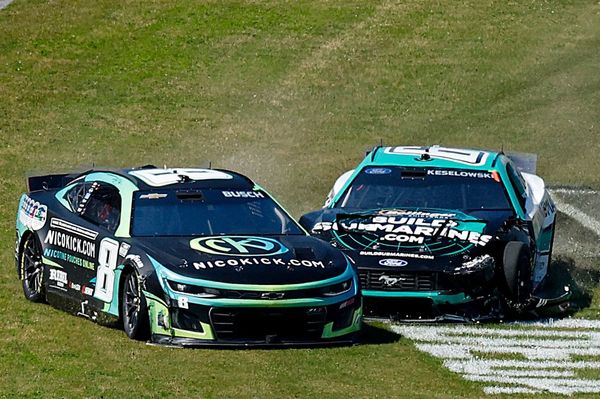
Pumpkin spice season, which officially began the last Tuesday of August when Starbucks released its fall drinks menu, is not the same as fall. It’s more about the idea of fall.
During pumpkin spice season, there are no cold rainy days, or uncomfortable family gatherings. Instead, all is crisp air, fuzzy sweaters, leaf piles, college football, bonfires, Taylor Swift albums and an overwhelming feeling of coziness. Scandinavians have hygge; Americans have pumpkin spice.
It’s such a lovely idea that other coffee shops and grocery stores, in a quest to beat Starbucks at its own game, have started rolling out their pumpkin spice products earlier and earlier in August. The 7-Eleven pumpkin spice latte launched this year on 5 August, which, in the northern hemisphere, is still indisputably summer.
Increasingly unlikely and downright gross products now offer pumpkin spice options, including bone broth protein, deodorant and poppers. There’s nothing that can’t be pumpkined.
During the fiscal year that ended on 30 July 2022, Americans purchased more than $236m in pumpkin-spice-flavored grocery items, according to the market research firm Nielsen IQ, a 24% increase over the previous year. This accounting doesn’t include the myriad pumpkin spice household items like scented candles and dog shampoo or dishes and drinks in restaurants and coffee shops.
Amazon declined to share how many pumpkin spice products it sells, but a keyword search turned up more than 138,000 items. These include not just cookies and pie filling (the two most popular applications of pumpkin spice), but also breakfast cereal, granola bars, hot chocolate, pet treats, baby food, beer, ramen, Goldfish crackers and Spam.

Starbucks reports that it has sold more than 600m pumpkin spice lattes in the US since the drink debuted in 2003 and 100m more pumpkin cream cold brews, available since 2019. Torani, one of the largest manufacturers of coffee flavorings, offers 15 different pumpkin syrups and sauces and sells more than half of them in August as coffeehouses start stocking up for the season. As of mid-August 2022, the company had already shipped enough product to flavor 17m pumpkin spice drinks, 4m more drinks than it sold during the entire fall of 2021.
Strangely, although pumpkin is available throughout most of the world (and Starbucks pumpkin spice lattes in 82 countries), the pumpkin spice obsession remains limited to North America. Perhaps this is because the US and Canada are the only countries where people eat pumpkin pie, and pumpkin pie tastes less like pumpkin than the spices mixed with it. One of the two earliest published pumpkin pie recipes, both of which appeared in a 1793 cookbook called American Cookery by Amelia Simmons, used mace, nutmeg and ginger, while the other used molasses, allspice and ginger, and the flavor profile hasn’t changed much over the past two centuries.
The blend we now think of as pumpkin pie spice – cinnamon, ginger, nutmeg and allspice – was codified by the McCormick spice company in 1934, around the same time as the rise of canned pumpkin, in order to “take the guesswork out of knowing which spices and amounts to use”, according to a company spokeswoman. Although McCormick’s pumpkin pie spice is available all year round, 76% of annual sales are between September and November. During those months it is surpassed in popularity only by cinnamon, nutmeg and poultry seasoning.
In 2010, McCormick included pumpkin pie spice in its annual flavor forecast, a list of trends that the company’s executives think will gain traction in the near future based on discussions with chefs, bakers and food writers, and McCormick’s own production team. Because McCormick is the world’s largest spice company, these prophecies tend to be self-fulfilling (this year they’re pushing “miso caramel”, in case you were wondering).
In the case of pumpkin pie spice, the forecasters predicted that its appeal would expand far beyond pie, cake and cookies, and, lo and behold, it did, with a bit of help from the company’s chefs and marketing team, who developed and disseminated a collection of recipes, sweet and savory, that incorporated the spice blend.
But why has pumpkin spice become the quintessential flavor of fall instead of, say, apple or pear? It’s a matter of perception, says Jason Fischer, a professor of psychological and brain sciences at Johns Hopkins University. Most people have definite memories of eating apples and ideas of what apples should taste like. “But when you ask people what it’s like to take a bite of pumpkin,” Fischer says, “they’ve never done that. It’s a blank slate. It’s something that’s amenable to reading all these other sensory cues on to. You add spices to it, attach feelings of fall, imagine something sweet and creamy that you put in drinks.”
The Starbucks pumpkin spice latte – known to devotees as the PSL – was invented in the spring of 2003 when Peter Dukes, then the company’s director of espresso, encouraged by the success of the gingerbread latte and the peppermint mocha the previous holiday season, decided to create a special drink for fall. According to legend and the Starbucks website, he and his team spent a day in a room decorated with pumpkins and kitschy fall decor alternating sips of espresso with bites of pumpkin pie in order to determine which flavors from the pie worked best with coffee. One of the early names for the drink was the fall spice latte, and indeed the PSL would be all spice, no gourd, until 2015 when Starbucks, with much fanfare, switched to a flavor syrup that contained actual pumpkin. It’s entirely possible, Fischer says, that with different marketing and visual cues, the exact same drink could be repositioned as a midwinter spice latte or, in its iced form, a summer spice latte. (It also, as the food scientist Kantha Shelke points out, tastes a lot like chai.)
But it won’t. A pumpkin spice latte is a pumpkin spice latte because it, like the thousands of other pumpkin and pumpkin spice products, is only available from August through November. “Pumpkin spice’s limited nature is what keeps it special,” says Andrea Ramirez, the consumer and customer insight manager for Torani. “If it were widely available year-round, there wouldn’t be the same anticipation, the countdown or the frenzy to get it while it’s available.”
And when pumpkin spice is in season, customers take advantage. In a 2020 study of what it described as “a major gourmet coffee chain”, the NPD Group, a Chicago-based market research firm, determined that repeat PSL customers were three times more likely to order the drink than those who had never had one and that people whose orders contained PSLs were likely to pay an average of $2.77 more per order.
Pumpkin spice lovers aren’t just willing to buy more, they’re also willing to pay more. In a 2020 study of 40 grocery items across six retailers, MagnifyMoney, a personal finance site owned by Lending Tree, discovered an average 8.8% “tax” on pumpkin spice items. (Trader Joe’s was the worst perpetrator, with an average pumpkin spice markup of 17.6%.) But if sales are any indication, shoppers don’t care.
Are they being duped? Would pumpkin spice by any other name taste so sweet? As an answer, Jason Fischer proposes this thought experiment: “Next time you have a pumpkin spice latte, stop and reflect. What does it taste like? Does it really taste like pumpkin? Imagine what carving a pumpkin tastes like. It’s nothing like the pumpkin spice latte, but it’s also going to be part of your experience of the smell of pumpkin. The cues are never really absent,” he concludes. “We never experience anything out of context.”
Especially if there is money to be made.







